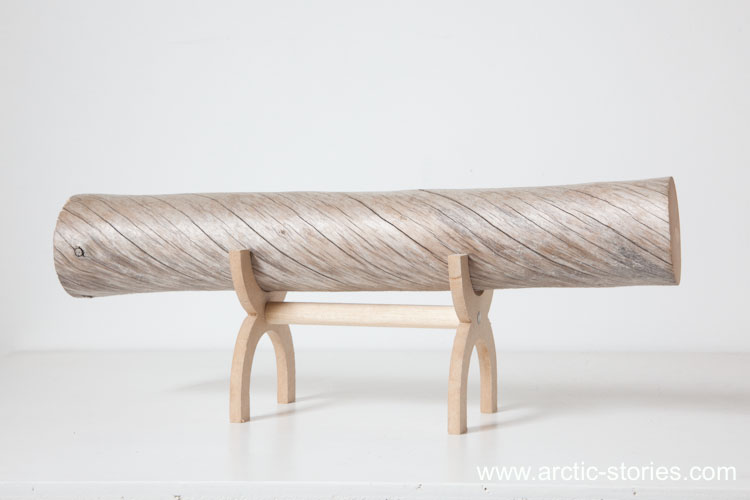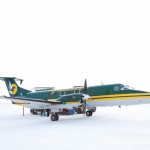In winter the boundaries of land and sea become blurred and can be a little unfathomable. Often there is no easy telling whether you are on solid ground or floating on ice, and were it not for the occasional tideline of flotsam you would not have any idea that you were on the beach at all.
In sheltered bays great swathes of twigs, trunks and stumps collect along the shoreline, perfect for firewood.
Impressive as some of these logs are, and a little ambitious as firewood, the really big question is where do they all come from? There is not a standing tree in sight, nor do any grow anywhere near Alaska’s north coast. Apparently they come from Canada, washed down from deep inland along Canada’s longest river, the 1080 mile long Mackenzie River, and then on out into the Arctic Ocean where they drift with the currents, become locked in sea ice each winter, and eventually get tossed up on an Alaskan beach – a long, long journey.
In the same way that you might pick up a shell on beach I have kept a small log from this beach, at first selected as firewood but at the last minute reprieved and saved as a memento.
A little theatrical maybe, but I’ve made a stand for my log and it lives on display in my home. I think it looks a touch hyperreal almost like a cartoon log, anyway it’s much admired for it’s twisting growth and shiny patina and never fails to charm with the possibilities of its life story. It’s speculative but my best guess, from asking around, is that it is black spruce from a tree that grew on the banks of the Mackenzie in an exposed and windy spot, which gave the wood its pronounced twist.
I hadn’t thought much as to the specifics of its age until the other day when I was in Rome and visiting the botanical gardens. Looking at the label for two tall stone pine trees, it declared, with a little pride, that these one and a half foot (forty five centimeter) girthed trees were over 200 years old. It got me thinking of my log.
On my return I sanded and polished the end of my log, I needed to count the growth rings. To my astonishment this two inch (five centimetre) wide log is in excess of one hundred and fifty years old. Now that is slow growing and I can only image just how old some of the big logs on that beach were!
















3 comments